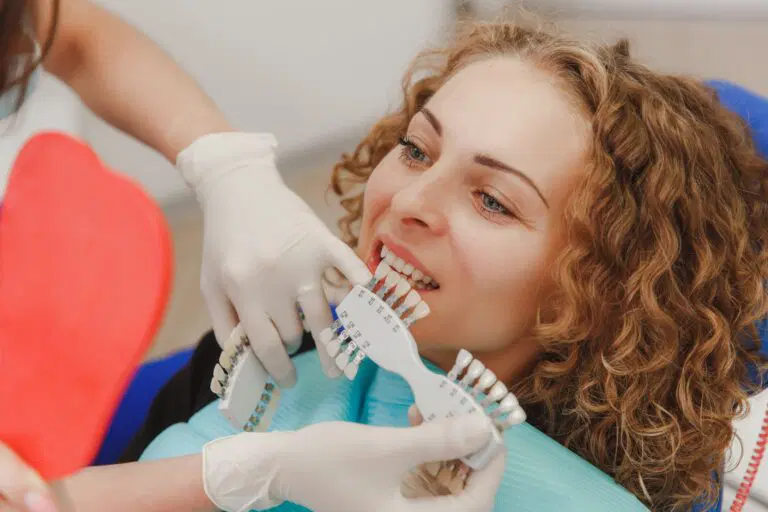
Porcelain Lamination in Turkey
Porcelain laminates, which means Leaf Veneer as a word, is the process of gluing a thin layer of porcelain to the front faces of the teeth after slight abrasion on the front faces of the teeth.
Since porcelain is prepared in a very thin layer, its light transmission and reflection is very close to the natural tooth, thus providing excellent aesthetics and no tooth needs to be cut (reduced) more than necessary. It is also strong against abrasion. Since its surface is smooth, it minimizes discoloration caused by smoking and similar reasons.
Average Length of Stay:
7 Days
Hospitalisation:
0 Day
Duration of Operation:
2 – 4 Hour
Anesthesia Type:
Local Anesthesia
Healing Process:
2-6 Months
Composite Laminate
Generally, they are aesthetic restorations made with composite on the outer surfaces of anterior teeth. It is a recontouring method with composite filling materials without any abrasion on the teeth or, if necessary, by making a very light abrasion. The patient is given a sufficient aesthetic appearance. Composite Lamina can be made in a single session between 30 minutes and 1 hour, and the result is achieved immediately. It is an aesthetic procedure that requires care and attention, and it should be adjusted very well, especially with the gums. Otherwise, food residue will accumulate in that area and may cause gum inflammation.
Zirconium
Zirconium dental veneer is the most suitable type of veneer to be used in patients with metal allergies. Zirconium, compared to other metals; It is preferred more and more every day because it is more resistant to temperature and corrosion. However, the zirconium used in tooth making is not used in its pure mineral form, but after it is converted into zirconia ceramic form. The fact that zirconium is a white substance creates a more transparent appearance on the tooth and is highly preferred because the gingival edges are white. It is among the most aesthetic materials.
Full Porcelain Crowns
They are porcelain dental systems with increased aesthetic quality and durability.
The ceramic structure is supported by a strong infrastructure and the whole structure of the porcelain is strengthened.
Although many things affect the appearance of the crowns; The most important is their response to light. Natural teeth transmit light and as a result, depth and vitality appear in Full Porcelain Crown teeth.
Due to the absence of metal in the porcelain infrastructure (full porcelain), it increases the light transmittance. Thus, results that are closest to the natural tooth are obtained aesthetically, and for this reason, full porcelain is preferred especially in the anterior teeth.
Bonding
Bonding applications are among the protective methods used in aesthetic dentistry. Bonding is applied by sticking a material to the tooth without causing damage to the tooth. When the patient has small gaps and minor deformities between the teeth, attachments are made on the teeth by using bonding material without cutting the teeth. The dentist performs operations in the patient’s mouth, reshaping the teeth. Bonding applications may be preferred for minor and minor defects in the teeth. If the problems are major, laminates and porcelain crowns should be made.
